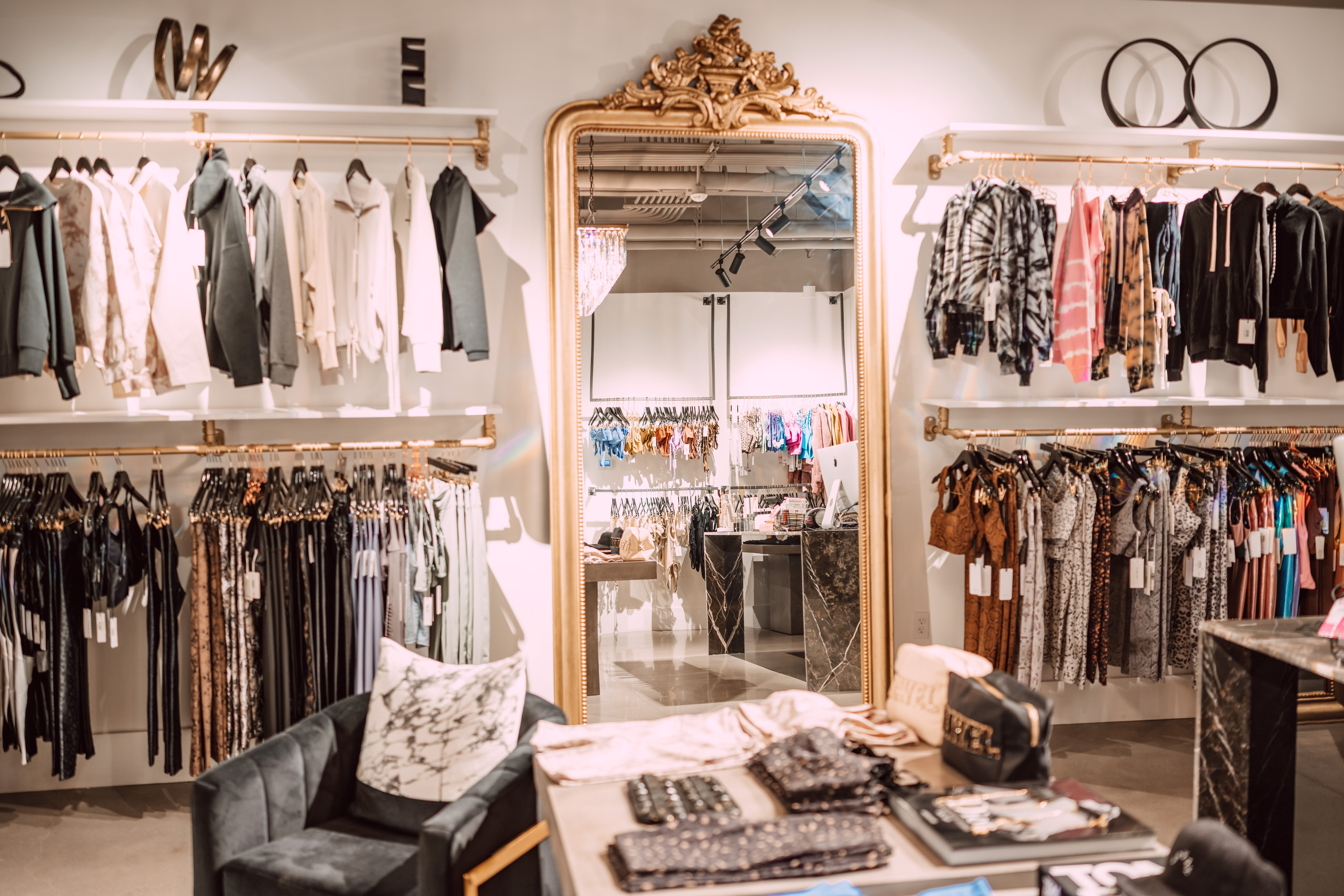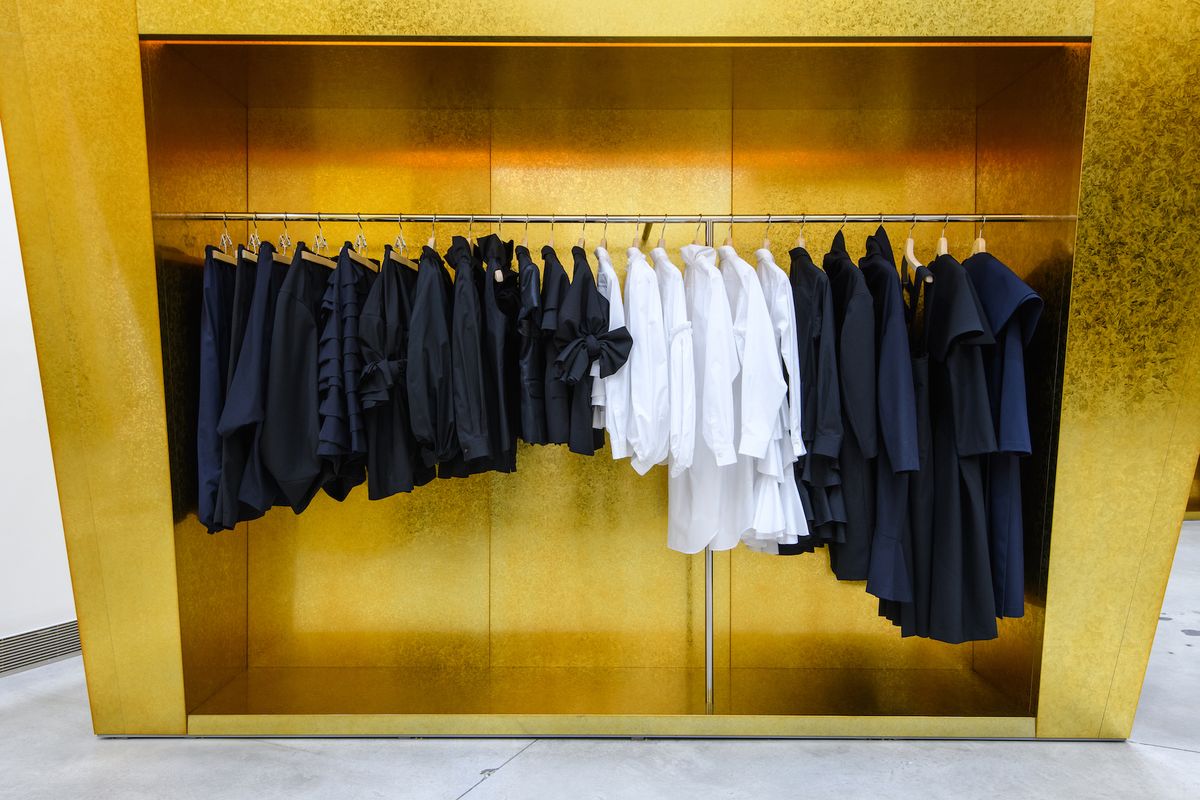The Effect of Social Media on Today's Boutique Fashion Trends
The Effect of Social Media on Today's Boutique Fashion Trends
Blog Article
Lasting Fashion: Just How Eco-Friendly Clothes Is Forming the Future of Design
As the fashion industry deals with increasing analysis over its ecological impact, the rise of sustainable fashion uses a promising choice that straightens style with eco-friendly obligation. boutique fashion. Just how does this activity genuinely affect the future trajectory of style, and what challenges exist in advance in its extensive fostering?
Ingenious Sustainable Materials
As the style industry grapples with its ecological impact, ingenious sustainable materials have arised as a vital remedy for reducing environmental footprints. These materials not only minimize reliance on fossil fuels yet also lessen harmful pesticide usage and water consumption.
Along with plant-based products, improvements in biofabrication have actually caused the development of lab-grown fabrics. Mycelium leather, originated from mushroom roots, offers a flexible and naturally degradable option to animal leather. Its production causes significantly reduced carbon exhausts and water usage, making it an extra lasting option for stylist seeking to straighten with environmentally friendly practices.
Recycled products are additionally gaining grip, with polyester made from recycled plastic bottles standing for a substantial development. This development not only draws away plastic waste from oceans and landfills but likewise reduces energy consumption compared to producing virgin polyester. With each other, these products emphasize the capacity for an extra lasting garment industry, leading the way for environmentally aware style and manufacturing.
Eco-Conscious Production
Structure on the developments in sustainable materials, the garment industry is also re-evaluating its manufacturing procedures to better decrease environmental influence. Key techniques include reducing water consumption, decreasing carbon discharges, and getting rid of hazardous chemicals. By taking on closed-loop systems, makers intend to reuse water and energy successfully, dramatically diminishing waste. The combination of renewable resource resources, such as solar and wind power, into production centers additionally reduces reliance on nonrenewable fuel sources.
Another essential facet is the reduction of toxic chemicals typically utilized in coloring and ending up textiles. Eco-conscious producers are changing towards plant-based dyes and waterless dyeing innovations, which not only protect regional environments yet likewise improve employee safety. Technologies like electronic printing decrease textile waste and energy usage, supplying a cleaner alternative to traditional approaches.
Moreover, openness and traceability have become paramount. With the improvement of blockchain modern technology, business can currently give comprehensive insights into their supply chains, ensuring environmentally friendly and moral methods at each action. This openness develops consumer trust and motivates brand names to maintain high sustainability criteria. As the need for eco-conscious items grows, manufacturers are obliged to innovate, guaranteeing that the future of style is both sustainable and fashionable.
The Rise of Upcycling
Upcycling, a transformative method in lasting style, involves creatively repurposing discarded products into new, top notch products. This cutting-edge technique not just minimizes waste yet likewise reduces the demand for basic materials, thereby minimizing the environmental effect of garments manufacturing. By reimagining and reconstructing existing products, developers and style brands have the ability to instill creativity into their collections while promoting ecological duty.

Moreover, the upcycling activity has actually equipped independent developers and small companies, who often lead in development due to their agility and imagination. By maximizing the abundant accessibility of unused products, these entities add to a circular economic situation, demonstrating that fashion can be both elegant and lasting. Through find more upcycling, the industry takes substantial strides towards a more conscious and accountable future.
Thrift Culture's Impact
The burgeoning thrift culture significantly improves the landscape of lasting fashion, highlighting the relevance of mindful usage. This cultural change encourages consumers to embrace pre-owned garments, find thereby minimizing the need for new garment manufacturing and lessening ecological influence. Second hand shopping not only prolongs the lifecycle of garments but also lowers the carbon footprint connected with production, transporting, and disposing of clothing.
A crucial facet of second hand society is its democratization of fashion. By providing a broad selection of styles from various ages at inexpensive rates, thrift stores make style accessible to a more comprehensive audience. This availability fosters a sense of uniqueness and creativity, as customers mix and match special pieces to curate customized closets without adding to the quick style cycle.
Additionally, thrift culture promotes circularity in fashion, aligning with the principles of a circular economy. By recirculating garments, the cycle of waste is interfered with, and resources are saved. This method supports a shift from a straight "take-make-dispose" design to a more sustainable structure. As even more consumers and designers welcome thrift society, the style sector is compelled to adapt, integrating lasting practices to fulfill the growing demand for eco-conscious alternatives.

Future Trends in Fashion
Style's evolution is increasingly formed by technical Get More Information advancements and sustainability-driven initiatives. As customers come to be much more eco mindful, the industry is reacting with groundbreaking developments that redefine the future of style. One noticeable fad is the surge of digital fashion, where virtual garments can be used in augmented fact settings, significantly lowering fabric waste. This shift not just accommodates the digital-savvy consumer but additionally reduces the ecological impact typically connected with garment manufacturing.
Furthermore, the assimilation of blockchain modern technology uses brand-new opportunities in transparency and traceability, enabling customers to verify the sustainability credentials of their apparel. boutique fashion. This makes certain responsibility in supply chains and advertises honest sourcing practices. 3D printing is yet an additional development that promises to revolutionize producing processes by enabling on-demand production, therefore lowering excess stock and waste
Additionally, the development of bio-fabricated materials, such as lab-grown leather and plant-based fabrics, provides sustainable choices to typical products. These advancements reduce reliance on pet items and resource-intensive crops. As these innovations mature, they are poised to transform the fashion landscape, combining design with sustainability. The future of fashion, as a result, depends on a smooth blend of modern technology, development, and eco-friendly obligation.
Final Thought
The improvement of the style sector through lasting practices indicates a pivotal change towards ecological liability. This advancement not only aligns style with environmental sustainability but likewise establishes a precedent for future trends focused on duty and technology.
As the style industry deals with increasing scrutiny over its ecological effect, the rise of lasting fashion provides a promising alternative that aligns design with ecological responsibility.As the style market grapples with its ecological impact, innovative sustainable products have actually arised as a vital service for decreasing ecological impacts. Together, these products highlight the potential for an extra sustainable fashion industry, leading the means for ecologically conscious layout and production.
Building on the developments in sustainable materials, the fashion sector is also re-evaluating its production procedures to better reduce ecological influence. boutique fashion.Upcycling, a transformative technique in lasting style, entails artistically repurposing discarded materials right into new, top notch items
Report this page